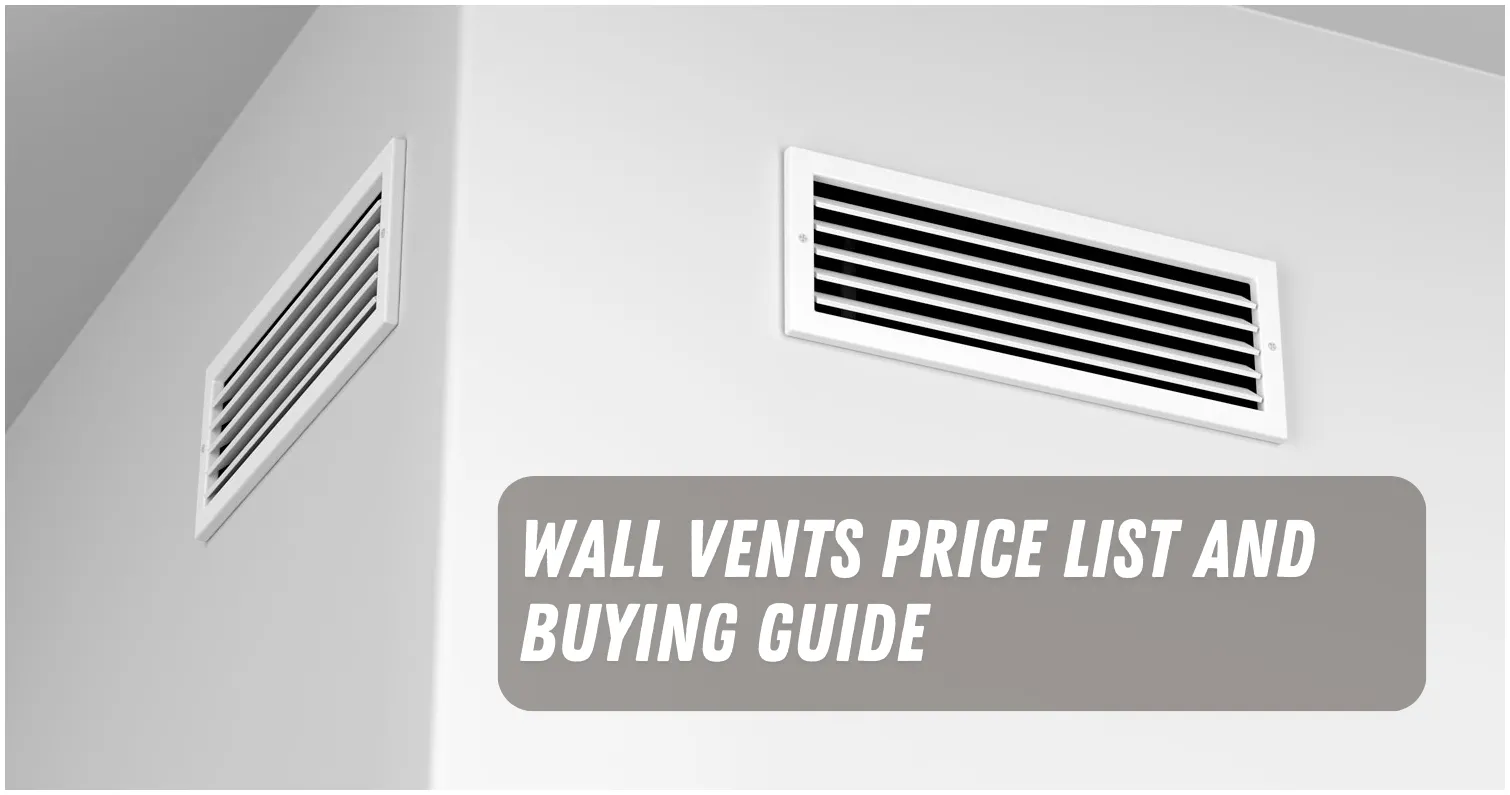The price of wall vents varies a lot based on the type, size, and brand you choose for your project.
The price of wall vents in the Philippines can range from ₱170 to ₱1,010 depending on the type of the vent.
This article will give you all the information you need to know about wall vents.
What are Wall Vents?

Wall vents are specifically designed openings in walls. They facilitate air exchange, contributing to a healthier living or working space.
Wall vents are essential components of a building’s ventilation system. They allow air to circulate, maintaining a comfortable indoor environment.
Different settings have different ventilation needs. In residential settings, wall vents help maintain air quality.
While in commercial settings, they aid in controlling humidity and temperature.
Type of Wall Vents

Wall vents come in various types. Some are categorized based on the materials used, such as metal or plastic.
While others are classified by their design, like adjustable or fixed vents.
However based on their function, here are some of wall vents you can choose for your house:
Supply Vents:
These vents are probably the ones you’re most familiar with in HVAC systems. T
hey distribute conditioned air (hot or cold) throughout your space via your ductwork. If you can feel air being expelled, it’s a supply vent.
Return Vents:
These vents draw air back into the HVAC system for conditioning.
While some homes may feature one large return vent, others may have several smaller return vents scattered throughout the space.
Generally, these vents are larger than supply vents to accommodate the air intake effectively.
Grilles:
Often spelt “grill,” this term is commonly used to refer to the permanent metal covering over the vents.
Grilles are typically found in walls, ceilings, and floors, and they can cover both return and supply vents.
Registers:
Registers are slatted openings controlled by an adjustable damper.
Rolling lever-type guides or side vent levers are used to manage the supply air flow from the ducts.
It’s recommended not to close them completely, as this might unbalance the system.
Wall Vents Price List in The Philippines

Before we delve into the price list, it’s important to note that prices can vary based on factors such as material, size, and brand.
Here’s a general price list for wall vents in the Philippines:
| Material | Size | Brand | Price |
|---|---|---|---|
| Round Airvent | 100mm | Kaze | ₱170 |
| Round Airvent | 150mm | Kaze | ₱199 |
| Rectangular Airvent | 130mm | Kaze | ₱256 |
| Dome Airvent | 100mm | Kaze | ₱450 |
| Dome Airvent | 100mm | Kaze | ₱499 |
| Rectangular Airvent | 240mm | Kaze | ₱528 |
| Square Airvent | 95mm | Kaze | ₱580 |
| Square Airvent | 404mm | Kaze | ₱664 |
| Metal | Large | Kaze | ₱1,010 |
Pros and Cons of Wall Vents
Before choosing a wall vent, it’s important to consider the pros and cons. Here are some points to consider:
Pros:
- Enhances indoor air quality
- Regulates temperature
- Removes excess moisture
Cons:
- Requires regular cleaning
- Installation can be complex
- Noise can be an issue with some models
Alternatives to Wall Vents
If wall vents don’t suit your needs, there are other ventilation options available such as:
- Roof Vents:
Installed along the peak of the roof, roof vents allow hot air to escape and promote natural ventilation. - Soffit Vents:
Placed under the eaves, soffit vents allow cool air to enter and circulate through the attic space. - Gable Vents:
Mounted on the sides of the house, gable vents provide additional air circulation and ventilation. - Roof Turbines:
These spinning vents on the roof help draw out hot air from the attic using wind power. - Attic Fans:
Electric-powered fans installed in the attic exhaust hot air and enhance air circulation. - Ducted Exhaust Fans:
Used in bathrooms and kitchens, these fans expel humid or odorous air to the exterior. - Window Fans:
Placed in windows, these fans pull fresh air into the room and can be reversed to exhaust stale air. - Solar-Powered Vents:
Similar to roof turbines, these vents use solar energy to promote ventilation.
Remember to consider the specific requirements of your space and choose the most suitable alternative for effective ventilation.
Things You Should Know About Wall Vents
Here are some commonly asked questions about wall vents:
- Are air vents in walls necessary?
Without effective ventilation, moisture can get trapped indoors and form condensation, especially in winter, leading to damp and mould growth. This not only damages your home but can also trigger respiratory illnesses. - How do vents work in a house?
In supply ventilation systems, a fan forces outside air into the building. The indoor air then leaks out through openings in the structure, bath and range fan ducts, and any intentional vents. - Do bedrooms need vents?
To maintain healthy air quality, fresh air is essential. Typically, installing the appropriate number of air vents will ensure a sufficient flow of fresh air. As a rule of thumb, consider installing one air vent in every bedroom and two in living rooms/common areas. - Where should vents be placed in a room?
In terms of air conditioning vents, installation near the ceiling is often optimal as it allows cool air to circulate freely. - Should wall vents be open or closed?
While adjusting vents can help balance airflow throughout your home, experts recommend not closing them completely. They can be slightly closed (not more than 75% shut) to better distribute air to areas that need it most.
In conclusion, wall vents play a crucial role in maintaining a comfortable and healthy indoor environment.
The wall vent price list in the Philippines varies, so it’s important to consider your specific needs and budget when choosing a wall vent.
[ratings]

